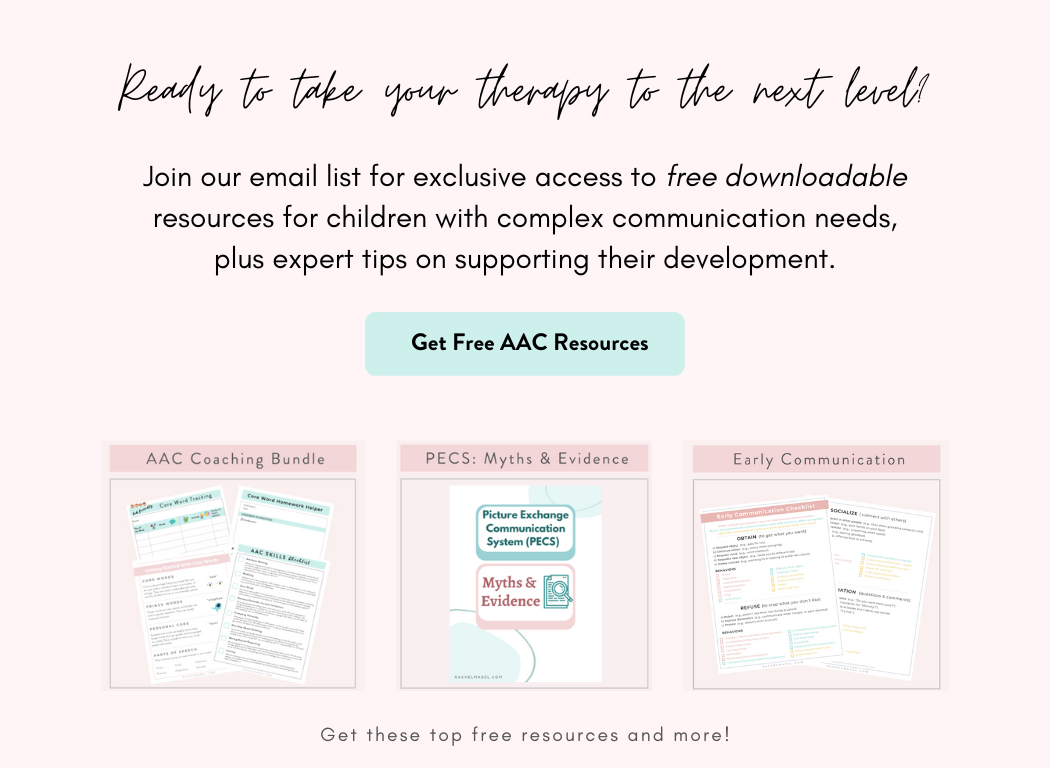Why We Must Attribute Meaning When a Child Babbles With AAC
Have you ever worked with a student who appears to be randomly activating icons on their AAC?
You may hear people say that the child is “just stimming” or that they're “just playing with it” or they “aren’t using it functionally”. When in actuality, they're engaging in a very crucial part of language development!
I want to share a story about a student of mine whom everyone said was “stimming” all day on their device. I set this student up with high-tech robust AAC and she started activating every single word on that device on repeat. Everywhere she went she brought the device and would not stop activating all of the buttons. The team was calling, emailing, and texting me, saying, “She's not using it functionally!” and “She's distracting the other students in class!” or “She won't stop stimming!”
One day after four months of intense exploration and non-stop babbling, the student stopped. She started acutely listening to what the adults around her were saying. We realized that any word we said, she could find on her device. Even obscure words like “grasshopper,” “island” and “receipt.” These are words we had never taught her. It was UNBELIEVABLE. The whole team was in shock.
I share this story for two reasons:
1. We can never assume that what a child decides to do on their AAC system isn't purposeful or meaningful. In this case, the child was learning where every single word was located on her device. It was truly incredible that she had taught herself this skill!
2. This child knew where every single word was on their AAC --- BUT she still very limited understanding in how to use all of those words in meaningful ways. Memorizing the words on the device did not translate to her magically being able to communicate with us. This illustrates how CRUCIAL it is for the adults around an AAC user to model language in meaningful ways.
AAC learners sometimes explore their devices by pressing buttons and saying words out of context. This exploration is similar to the “babbling” stage that infants go through when acquiring language. Just like when babies explore producing sounds to say words, AAC learners explore their devices to learn the meaning and power of their words.
When a baby says “da” for the first time how do adults typically respond? “DADDY! You said DADDY, DADDY is coming home soon!”
That “da” could have been completely random —- but over time when we respond to that “da” as intentional then the baby learns that’s how they say “daddy”. It’s no different when it comes to AAC.
So what do we do when a child is “babbling” on their device? We attribute meaning to what they are communicating in the exact same way.
If a child says “shark” even though you are holding up the “dolphin” you can attribute meaning by taking what the child says and responding naturally.
EXAMPLE: “Should we try to find a shark?” or “This DOES look like a shark —- but it’s actually a dolphin.”
By attributing meaning, it validates what a child is saying. It also demonstrates that there is a cause-and-effect relationship between what a child says on their device and the actions of their communication partner.
Instead of expecting our students to have immediate intention and accuracy with their AAC, how do we cultivate space for more explorative learning of language? We can shape their language learning and see more progress if we actually pull back on our expectations and let the process flow more freely.
Read more about Stimming and AAC on my Instagram with my 5 part collaboration with Laura Hayes. (1, 2, 3, 4, 5)
Watch my YouTube video on What to do When a Child Makes a "Mistake" on their AAC device
Enjoyed this post?
If you want even more helpful AAC strategies and resources that I don’t share anywhere else then join my email list!
That’s where I share my clinical insight and my favorite resources. You also will gain access to my Freebie Vault where you’ll find downloadable AAC resources I use everyday in my practice.





